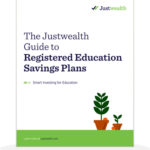Want an (almost) immediate 20% return on your investment? How about keeping that return re-invested for a number of years in a tax-shelter and then have taxes payable on the gain at a reduced rate or pay no tax at all? Sound too good to be true? If you have a child of your own or have a close relationship with one, then these investment possibilities can be realized by investing in a Registered Education Savings Plan (RESP).
Thanks to the Government of Canada, all eligible beneficiaries qualify for a basic 20% grant on contributions up to $2,500 per year which equates to $500. Over the course of an RESP lifetime, Canada Education Savings Grants (CESGs) can total up to $7,200 for any single beneficiary. Combine the grant money with the lifetime contribution limit of $50,000 and investment income earned over the years and you can create a pretty sizable education nest egg!
There is plenty of literature in the public domain that supports a number of facts about post-secondary education:
- Higher education is associated with higher earnings potential and career opportunities
- Enrollment in post-secondary education continues to rise
- Costs of post-secondary education have handily outpaced the general rate of inflation
Rather than focusing on why it’s important for children to pursue post-secondary education and to begin saving for it, we would rather demonstrate the merits of an RESP from a financial point of view.
Not everyone has the luxury of maxing out all possible tax-sheltered investment options. So it is possible that you may have to weigh the benefits of investing in an RRSP vs. TFSA vs. RESP. The following table highlights a few aspects of each:
| Investment Type | Tax-Deductible Contribution? | Accumulates Tax-Free? | Eligible for Government Grant? | Taxed Upon Withdrawal? |
| RRSP | Yes | Yes | No | Yes |
| TFSA | No | Yes | No | No |
| RESP | No | Yes | 20% grant up to $500 per year | Investment income and grant money taxable to Beneficiary |
As a hypothetical example, consider an investor with $2,000 of after-tax money to put away each year for the next 18 years. Assume that the investor has a newborn, a marginal tax rate of 40%, earns a 6% return on investments and takes the money out the tax-shelter over 4 years. Furthermore, assume the child (beneficiary) will have an effective tax rate of 10% at age 18.
At the end of the fourth year of withdrawals, the following cumulative after-tax payments result for each option:
RRSP $64,600
TFSA $71,650
RESP $77,400
As with any hypothetical example, there are quite a few assumptions used, and some of them may not be realistic. But, if you are faced with the decision to invest in only one of the three tax-shelter options, from a purely financial perspective, the RESP seems like a clear winner.
There is quite a bit more thought and research that should go into making any investment decision, and to help investors we have produced a document available for download: The Justwealth Guide to Registered Education Savings Plans. Inside you will find general information about RESPs as well as some details regarding the Justwealth Education Target Date Portfolios, our innovative investment solution for use with RESPs.
Some of the key discussion points in the document conclude that in order to maximize the benefits available to RESP account subscribers:
- Open up an RESP as soon as possible after the birth of a child
- Use a family plan if that option is available
- Contribute at least $100 in each of four years to qualify for CESG eligibility for ages 16 and 17
- Emphasize investment growth in early years and minimize risk in later years
- Keep fees as low as possible
For more information on RESPs and Justwealth’s Target Date Portfolios, please download The Justwealth Guide to Registered Education Savings Plans.
Written by James Gauthier, Chief Investment Officer at Justwealth


Comments are closed.